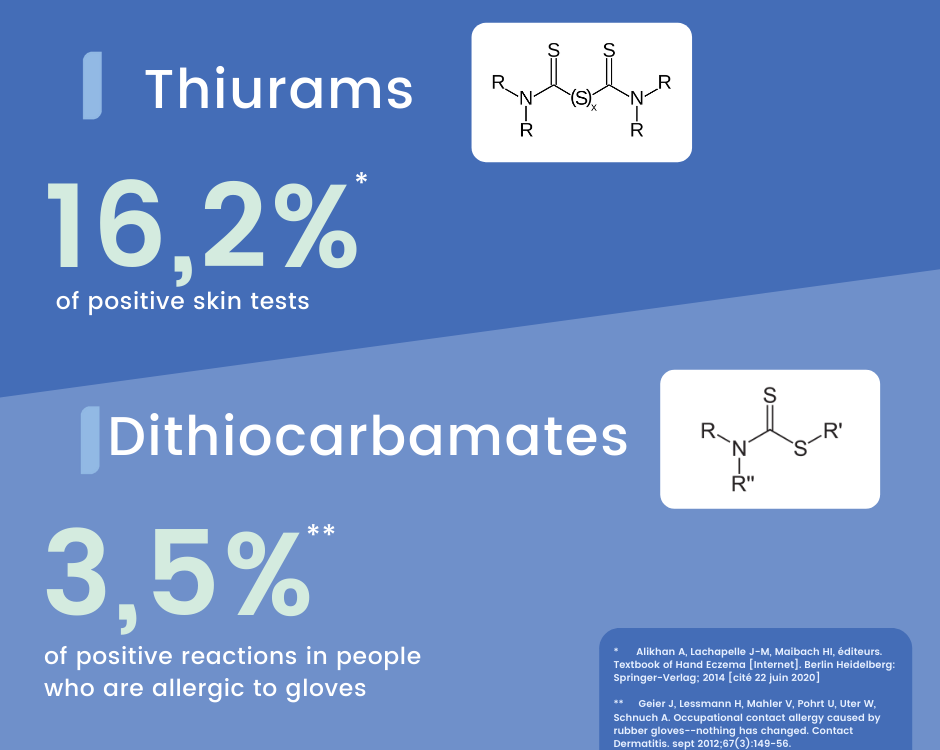These latex reactions can be divided into several types:
-
-
- Local reactions (skin, respiratory)
- Systemic reactions: chemical irritation reactions and allergic reactions requiring sensitization, either delayed (type IV) or immediate (type I) 2
-
Immediate-type reactions cause lesions that appear within minutes of contact with latex. They may be centered on the area of contact but may also spread to other areas or become generalized. They are of erythematous, oedematous, popular, pruritic type and disappear within a few hours after the contact with the allergen is stopped.
These allergies are not to be taken lightly as they can lead to anaphylactic shock.
Anaphylaxis, or anaphylactic shock, is a serious medical emergency caused by an immediate and generalized allergic reaction: there is a risk of death if action is not taken quickly. It is a rapid and violent reaction (5 to 20 minutes). In anaphylactic shock, several symptoms are associated:
- Respiratory (asthma)
- ENT (rhinitis)
- Cardiac (tachycardia)
- Cutaneous (giant urticaria, angioedema)
- Digestive (vomiting)3





